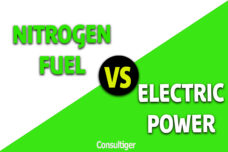Holland glued it first. World’s first adhesive factory was set up in this country and the year was 1690. And it was only in the 20th century that the science of manufacturing glue got popularised with a better scientific understanding of adhesion science amd the introduction of resins and plastics and an increased understanding of the science of adhesion.
Natural and Synthetic Adhesives
Environment-friendly vegetable/animal-based adhesives continue to be in use. However, adhesives produced from natural materials show lesser resistance to natural elements like water and heat. Synthetic adhesives that can be custom made to suit the application have found their place in several commercial applications.
Let’s look at the manufacturing of natural adhesives.
Adhesives can be made out of animal remains such as skin, bones and hooves. The process starts with washing and soaking the material. The material is then cooked in water, allowed to cool and once again cooked. This is done to get the raw glue by breaking the collagen. Collagen is a protein found in skin, bones and hooves. It is a kind of binder that holds the parts withing the body together. Impurities are cleaned by using hydrochloric acid or any other chemical. Depending on the viscosity required, the glue is heated and dried. This is how animal-based adhesives are produced.
Plant-based adhesives are made from seeds, tubers and the roots of plants. Popular plants used for the purpose are corn, rice and wheat. Plant-based adhesives are high on eco-friendliness since they are highly biodegradable.
Methyl Cellulose Adhesives are produced from trees and plants that have wood content. These are chemically processed so as to provide higher polymer binding properties. To create methyl cellulose, raw cellulose is combined with a highly alkaline solution – sodium hydroxide – and heated. Stronger bond is obtained when cellulose hydroxyl groups are replaced by methoxide. Labels, decals, wallpaper and other paper products are produced using such adhesives.
Rubber-based adhesives have several applications. Natural rubber when processed with additives offer (a) superior adhesion, (b) superior temperature resistance and (c) superior cohesive strength. Rubber-based adhesives are produced by dissolving rubber (natural) with solvents, mixing with resins/other compounds. Particular polymers then created using chemical catalysts or heat. Some known rubber-based adhesives are polychoropene, styrene, polyisobutylene, polysulfide, polyamide, silicone and polyurethane.
Eco-friendly adhesives with high solid solvents and low in organic compounds are showing traction. These adhesives are less hazardous to manufacture & are non-toxic for users. And are ‘Green Labelled” for ease of identification.
For any consulting help for manufacturing the above adhesives, please visit www.consultiger.com.












